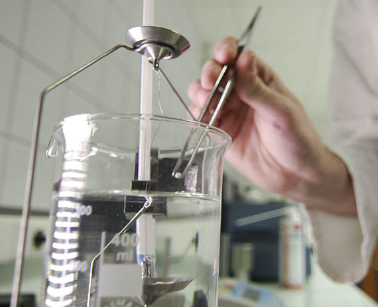At the heart of modern industry, expertise in material composition is crucial to meeting contemporary challenges. The notion of “compound” plays a central role, as it allows the creation of optimized mixtures that offer superior characteristics.
By understanding the extrusion process and the use ofspecific additives in plastics, you will be able to understand the challenges of compounding and its varied applications in the transformation of plastics.
The judicious combination of different components in compounding is not only an innovation, but also a necessity to ensure the durability and effectiveness of the products. Processes such as injection molding and recycling complement this picture, providing an integrated approach to rising environmental concerns.
What is a compound?
And compound is a mixture of various materials, usually plastic, which modify their physical characteristics. This extrusion process achieves improved properties, making products perform better.
Additives, such as plasticizers and fillers, are often incorporated to achieve specific results. Thus, designing compounds suitable for different applications is essential.
Why compounding to improve material properties?
The compoundage is essential in the processing of plastics. This process, viaextrusion, allows you to incorporate additives to improve the properties of the material. Processors can thus create specific formulations, increasing the durability and functionality of plastics.
This optimal blend drives innovation in the industry, meeting the varied demands of modern applications.
Specific properties of compounds
THE compounds have specific properties which influence their applications in various fields. For example, the thermal resistance of some materials makes them ideal for extreme environments.
Additionally, characteristics such as electrical conductivity allow these substances to be used in electronics. Their lightness and durability also contribute to the creation of innovative products. Mechanical properties, such as flexibility, encourage their use in a variety of applications.
Basic steps of compounding
The compoundage begins with material collection, where components are carefully selected. Then, a extrusion process is used to mix materials, ensuring homogeneity.
The mixture is then processed by suitable methods, creating a quality final product. Finally, the manufacturing remains undergo a recycling efficient, reducing waste and contributing to the circular economy.
Fusion mixing
The fusion mixing is a crucial process in the compoundage. It involves heating plastic materials to liquefy and homogenize them. This method ensures uniform distribution of additives, thus improving the properties of the final product.
By controlling the temperature, we optimize the fluidity and quality of the material, guaranteeing efficient and consistent mixing. This technique plays a determining role in the development of high-performance materials.
Injection molding and its connection with compounding
The injection molding transforms plastic granules into finished products. After the compoundage, where materials are mixed to improve their properties, the material is often used in the molding process.
L’extrusion also allows you to prepare the material for this step. The efficiency of these methods ensures rapid production adapted to the specifications of the desired products.
Transformers in the extrusion-compounding process
THE extruders are essential in the extrusion process, where they mix and deform plastic materials. They work by combining various polymers and additives, creating a homogeneous mixture. The role of transformers is to ensure an efficient transition of the material through the process, influencing the final properties of the product.
By integrating advanced technologies, the compoundage is optimized to meet the required technical specifications. The machines used vary depending on the applications, each having distinct characteristics.
Recycling in compounding
The recycling is essential in the compoundage, because it allows materials to be reused, reducing plastic waste. Recycled plastic materials, such as PET or HDPE, are included in the manufacturing process.extrusion.
This makes it possible to obtain sustainable products while reducing the environmental impact. Effective resource management helps preserve our planet.
